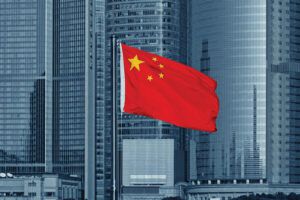China has grown to become the second-largest economy and second-largest stock market in the world, and is setting ambitious goals when it comes to climate.
President Xi Jinping announced China’s goal to hit peak emissions before 2030 and reach carbon neutrality by 2060 at the 2020 Climate Ambition Summit. The 14th Five-Year Plan also sets several new climate targets, including non-fossil power generation to reach 40% of total power generation by 2025, and increasing electric power consumption to 30% of the total by 2025.
The country allocated $607m for its 2022 renewable power subsidy and plans to have renewable energy account for 35% of its electricity consumption by 2030. Historically, China has a proven track record of achieving ambitious long-term renewable energy goals set forth within the Five-Year Plan.
The impact for the investment industry is that we can expect more supportive green finance regulations in the near future, and more monetary and fiscal spending to meet the climate goals as well as develop the country to achieve its modernisation goals.
ESG disclosure
MSCI started to partially include China’s large-cap A shares in the MSCI Emerging Markets Index in 2018. In the same year, China was encouraged to disclose ESG information under the Listed Company Governance Code.
In June 2022, the China Enterprise Reform and Development Society published voluntary ESG disclosure guidelines aimed at establishing uniform disclosure practices that are uniquely tailored to China-focused ESG priorities.
Although compliance with the guidance is voluntary, we have seen an increasing number of companies in China disclosing their ESG policies. This is evidenced by the increased interest in Chinese companies by international investors and the corporates’ intention to attract capital flows and diversify their equity ownership.
Green bonds
People’s Bank of China, the National Development and Reform Commission and the China Securities Regulatory Commission jointly issued an updated green bond projects catalogue in July 2021.
The revised catalogue provides further regulation to the domestic green bond market and is designed to direct more capital flows (domestic and international) to green projects. This updated catalogue aligns more with international standards. It is now expanded the allowed bond issuers from just regulated financial entities to all eligible green bond issuers such as listed companies and other financial institutions.
Such development diversifies participants in the green bond market, allowing investors to choose from a variety of industries and sectors that are contributing to the success of the long-term goal of a green society in China.
As green financing is an important tool for the government to facilitate its green development plans we expect such broadening issuers base will allow more efficiency in directing capital flows. It will be particularly helpful to low-carbon transition and green technologies projects to engage funding as corporates are the key participants in investing in these developments.
China’s 2030 climate target is approaching and we expect the domestic green bond market to grow significantly in the coming years in size, diversification, and liquidity to facilitate the needed project and infrastructure build-in preparation for achieving climate-neutral goals by 2060.
Green infrastructure
China could kill two birds with one stone. As the youth unemployment rate is at a historically high level, kicking off more green infrastructure projects can ease pressures in the market for young people to join the labour force quickly.
The reopening has materially improved investors’ sentiment towards China. The subsequent supportive policies and activities to pick up from here are key for further economic recovery.
As evidenced by the latest PMI, China is in the expansionary territory now as nearly all sub-index numbers are above 50, including new orders, new export orders, services etc. which are all picking up in activity.
Substantial financing and subsequent deployment of the capital will provide fundamental financial support to corporates in re-establishing thought leadership in renewable energy, clean technology, electrical vehicles and future mobilities.
